Archaeology Hotspots: Unearthing the Past for Armchair Archaeologists
Series Editor: Paul G. Bahn, independent archaeologist and author of The Archaeology of Hollywood ()
Archaeology Hotspots are countries and regions with particularly deep pasts, stretching from the depths of prehistory to more recent layers of recorded history. Written by archaeological experts for everyday readers, the books in the series offer engaging explorations of one particular country or region as seen through an archaeological lens. Each individual title provides a chronological overview of the area in question, covers the most interesting and significant archaeological finds in that area, and profiles the major personalities involved in those discoveries, both past and present. The authors cover controversies and scandals, current digs and recent insights, contextualizing the material remains of the past within a broad view of the areas present existence. The result is an illuminating look at the history, culture, national heritage, and current events of specific countries and regionsspecific hotspots of archaeology.
Archaeology Hotspot Egypt: Unearthing the Past for Armchair Archaeologists , by Julian Heath (2015)
Archaeology Hotspot Great Britain: Unearthing the Past for Armchair Archaeologists , by Donald Henson (2015)
Archaeology Hotspot Egypt
Archaeology Hotspot Egypt
Unearthing the Past for Armchair Archaeologists
Julian Heath
ROWMAN & LITTLEFIELD
Lanham Boulder New York London
Published by Rowman & Littlefield
A wholly owned subsidiary of The Rowman & Littlefield Publishing Group, Inc.
4501 Forbes Boulevard, Suite 200, Lanham, Maryland 20706
www.rowman.com
Unit A, Whitacre Mews, 26-34 Stannary Street, London SE11 4AB, United Kingdom
Copyright 2015 by Rowman & Littlefield
All rights reserved. No part of this book may be reproduced in any form or by any electronic or mechanical means, including information storage and retrieval systems, without written permission from the publisher, except by a reviewer who may quote passages in a review.
British Library Cataloguing in Publication Information Available
Library of Congress Cataloging-in-Publication Data Available
ISBN 978-0-7591-2401-1 (cloth : alk. paper)
ISBN 978-0-7591-2402-8 (electronic)
 The paper used in this publication meets the minimum requirements of American National Standard for Information SciencesPermanence of Paper for Printed Library Materials, ANSI/NISO Z39.48-1992.
The paper used in this publication meets the minimum requirements of American National Standard for Information SciencesPermanence of Paper for Printed Library Materials, ANSI/NISO Z39.48-1992.
Printed in the United States of America
For Mum and Dad ( again ), and Jimmy Blood Brother.
Contents
Acknowledgments
First, I must say a special thank you to Joyce Tyldesley for providing me with the unexpected but welcome opportunity to write this book, and for helping out with various Egyptological queries. Several people also generously provided images for the book, and I must therefore thank Steven Snape, Campbell Price, Lenka and Andy Peacock, Pierre Vermeersch, Bill Manley, Bjrn Christian Trrisen, Ricardo Liberato, Didier Descovens, Philip Pikart, Richard Seaman, Przemyslaw Idzkiewicz, and Berthold Werner. Finally, I must thank Leanne Silverman, Andrea O. Kendrick, and Alden Perkins at Rowman & Littlefield, and my editor, Paul Bahn, all of whom helped this book through to completion.
Chronology of Ancient Egypt*
Paleolithic Period (700/500,0007000 BP**) | Predynastic Period (53003000 BC) |
Lower Paleolithic c.700/500,000200,000 | Lower Egypt Neolithic c.53004000 Maadi Cultural Complex c.40003200 |
Middle Paleolithic c.200,00035,000 |
Upper Paleolithic c.35,00021,000 |
Late Paleolithic c.21,00010,000 | Upper Egypt Badarian Period c.44004000 Amratian/Naqada I c.40003500 Gerzean/Naqada II c.35003200 Naqada III/Dynasty 0 c.32003000 |
Epipaleolithic c.10,0007000 |
Saharan Neolithic Period (88004700 BC) |
Early Neolithic c.88006800 |
Middle Neolithic c.66005100 |
Late Neolithic c.51004700 |
Early Dynastic Period (30002686 BC) |
First Dynasty c.30002890 |
Second Dynasty 28902686 |
Old Kingdom (26862160 BC) | First Intermediate Period (21602055 BC) |
Third Dynasty 26862613 Fourth Dynasty 26132494 Fifth Dynasty 24942345 Sixth Dynasty 23452181 Seventh and Eighth Dynasties 21812160 | Ninth and Tenth Dynasties 21602055 (based at Herakleopolis) |
Eleventh Dynasty 21252055 (based at Thebes) |
Middle Kingdom (20551650 BC) | Second Intermediate Period (16501550 BC) |
Eleventh Dynasty (all Egypt) 20551985 Twelfth Dynasty 19851733 Thirteenth Dynasty 1733after 1650 Fourteenth Dynasty 17331650 (minor rulers probably contemporary with the Thirteenth or Fifteenth Dynasty) | Fifteenth Dynasty 16501580 |
Sixteenth Dynasty 16501580 (Thebes-based rulers) |
Seventeenth Dynasty 15801550 |
New Kingdom (15501069 BC) Eighteenth Dynasty 15501295 Ramesside Period (12951069 BC) Nineteenth Dynasty (12951186) Twentieth Dynasty (11861069) | Third Intermediate Period (1069664 BC) |
Twenty-First Dynasty 1069945 |
Twenty-Second Dynasty 945715 |
Twenty-Third Dynasty 818715 |
(Kings in various centers, contemporary with the later Twenty-Second, Twenty-Fourth, and Twenty-Fifth Dynasties) |
Twenty-Fourth Dynasty (727715) |
Twenty-Fifth Dynasty (747656) |
Late Period (664332 BC) | Ptolemaic Period (33230 BC) |
Twenty-Sixth Dynasty (664525) |
Twenty-Seventh Dynasty (525404) | Roman Period (30 BCAD 395) |
Twenty-Eighth Dynasty (404399) |
Twenty-Ninth Dynasty (399380) |
Thirtieth Dynasty (380343) |
Second Persian Period (343332) |
* All dates before 664 BC are approximate
** BP stands for Before Present.
Introducing Ancient Egypt
In the long course of human history, many great civilizations have come and gone, but the most remarkable is arguably the one that emerged in Egypt some five thousand years ago at the end of the fourth millennium BC. Ancient Egyptian civilization subsequently endured for some three thousand years and its people left as their legacy an abundant collection of stunning monuments and artifacts, which continues to expand as new discoveries are frequently made by archaeologists who continue to work in Egypt despite its ongoing political troubles.
In this introduction, after first examining the geographical setting of ancient Egyptian civilizationwhich had a considerable bearing on its emergence and subsequent longevitywe are going to look briefly at the chronological story of ancient Egypt. Although ancient Egypt is often defined by the spectacular archaeology of the pharaohs this story actually begins in the prehistoric period many thousands of years before their magnificent tombs, temples, and artworks ever saw the light of day. The first Egyptians lived during the Paleolithic or Old Stone Age and followed a mobile hunter-gatherer lifestyle that was eventually replaced as agriculture appeared in the Nile Valley during the Neolithic or (New Stone Age). The Neolithic marks a hugely significant time in ancient Egypt (as does its appearance elsewhere in the prehistoric world), as the settled agricultural economy of Egypts first farmers ultimately gave rise to the unification of Egypt into a single state, which was ruled over by a succession of ruling families or dynasties at the head of which sat the king or pharaoh. The latter stages of the Neolithic are thus referred to as the Predynastic Period and the time of the pharaohs that followed is known as the Dynastic Period, which eventually came to an end under the heel of the mighty Roman Empire (see the timeline, Chronology of Ancient Egypt, for a detailed breakdown of the various periods of Egyptian prehistory/history as archaeologists and historians generally define them).
Next page
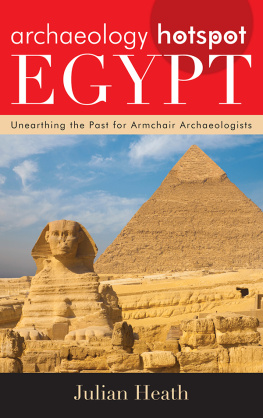

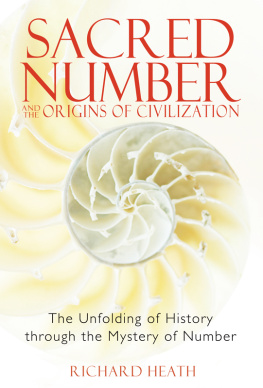

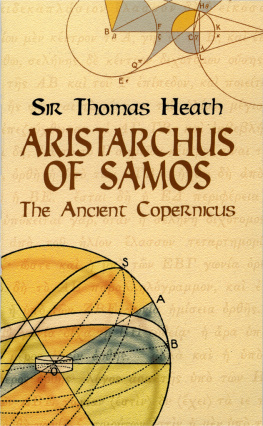

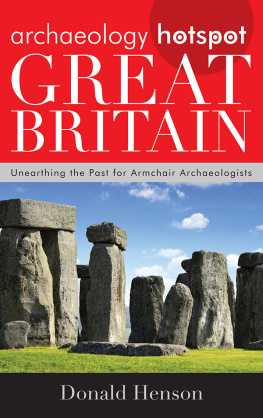

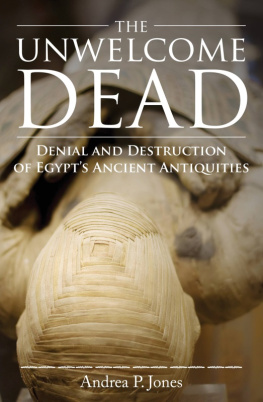


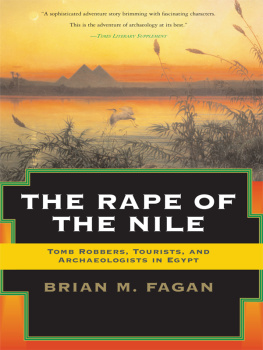
 The paper used in this publication meets the minimum requirements of American National Standard for Information SciencesPermanence of Paper for Printed Library Materials, ANSI/NISO Z39.48-1992.
The paper used in this publication meets the minimum requirements of American National Standard for Information SciencesPermanence of Paper for Printed Library Materials, ANSI/NISO Z39.48-1992.